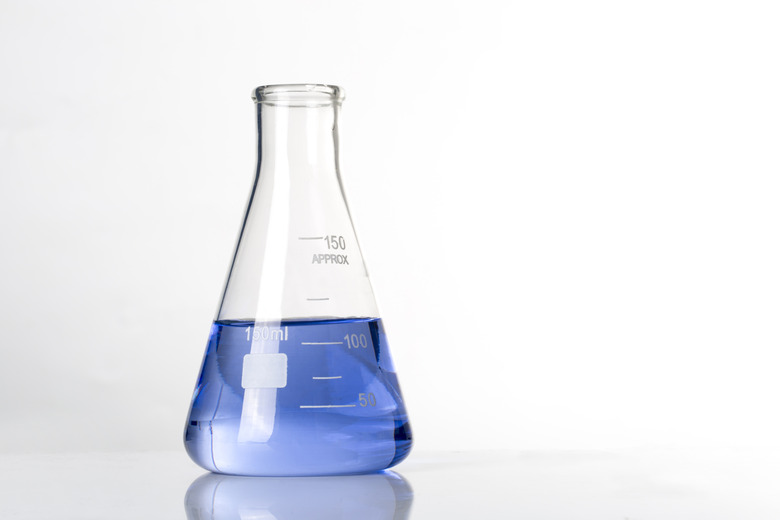How To Calculate The Ionic Strength Of A Solution
Ionic strength is the total ion concentration in solution. Knowing ionic strength is important to chemists because ions have an electrical charge that attract or repel each other. This attraction and repulsion causes ions to behave in certain ways. Basically ionic strength represents interactions between the ions in water and the ions of a solution. Calculate ionic strength using a mathematical formula proposed in 1923 by Peter Debye and Erich Huckel.
1. Apply Formula
Use this formula to calculate ionic strength: I= 1/2 n∑i (CiZi )squared, where "I" represents ionic strength, "n" represents the number of ions in solution, "i" represents the specific ion in solution, "Ci" represents the concentration to the /th species, such as moles per liter, "Zi" represents the valence or oxidation number of the /th species and "∑" represents the summation of concentrations and valences of all ions. Remember positive and negative ions cannot separate, which needs to be considered as a factor in the equation.
For example, say you want to find the ionic strength of 1.0 M La2(SO4) plus 1.0 M CaCl2.
2. List Concentrations
List the concentrations. For example, La 3+= 2.0 M, SO4 2- =3.0 M, Ca2 1+= 1.0 M, Cl 1- = 2.0 M.
3. Input Concentrations and Valences
Input concentrations and valences into the Debye and Huckel equation.
I = ½(2_3(Squared)+3_2(Squared)+1_2(Squared)+2_1(Squared)).
4. Find Result
Calculate for result, understanding that the formula is the molar concentration of the ion multiplied by the valence squared. Take {2*32} in the formula above for example. The 2 is the molar concentration of La (Lanthanum), the 3 is the valence of electrons of La, and the valence is squared. The ionic strength is 18.0.
Things Needed
- Concentrations of solutions
- Periodic table with valences
TL;DR (Too Long; Didn't Read)
A basic background in chemistry is useful in determining molar concentration and valences.
You can use an ionic strength calculator to find ionic strength of a solution, which minimizes math errors. Select "ion" and input concentration of solution. For example if the concentration is 1.0 M, type 1 for concentration. Press "Calculate" or "Ionic Strength" to complete the calculation.
Warning
Consider all solutions potentially hazardous.
References
Cite This Article
MLA
Stanley, Nina. "How To Calculate The Ionic Strength Of A Solution" sciencing.com, https://www.sciencing.com/calculate-ionic-strength-solution-7470065/. 4 June 2018.
APA
Stanley, Nina. (2018, June 4). How To Calculate The Ionic Strength Of A Solution. sciencing.com. Retrieved from https://www.sciencing.com/calculate-ionic-strength-solution-7470065/
Chicago
Stanley, Nina. How To Calculate The Ionic Strength Of A Solution last modified March 24, 2022. https://www.sciencing.com/calculate-ionic-strength-solution-7470065/
